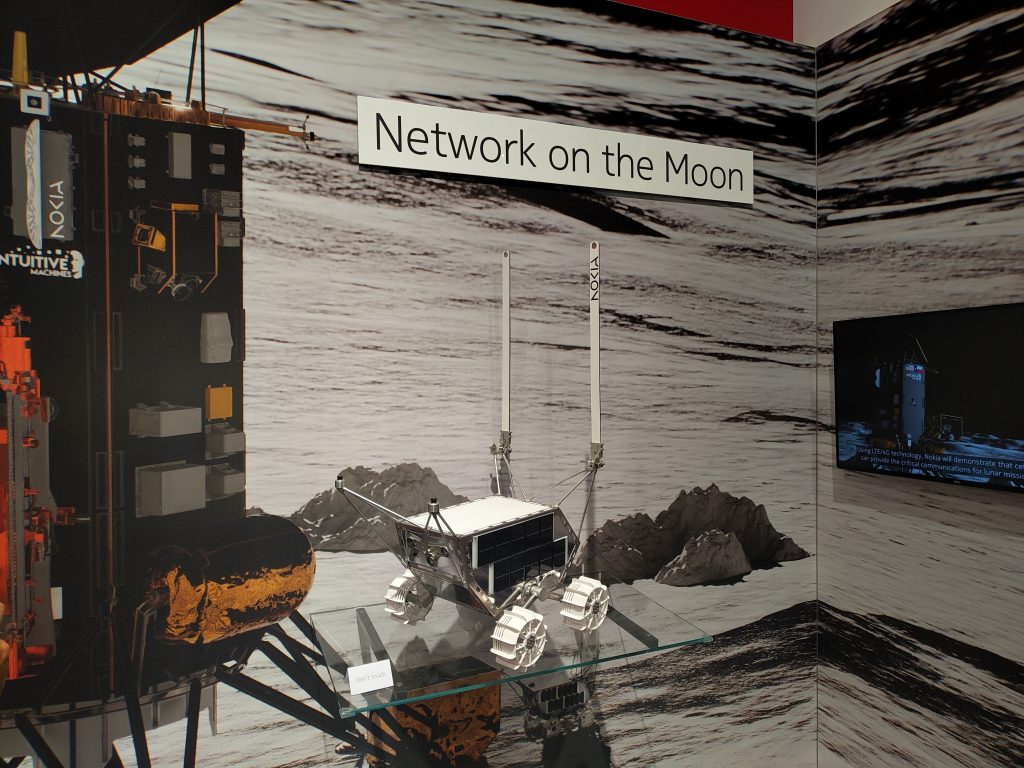
NASA and Nokia are collaborating on an ambitious project to establish cellular network available on the Moon, marking a significant step toward maintaining a long-term human presence on other celestial bodies.
A SpaceX rocket scheduled for launch later this year will carry a 4G network designed for lunar conditions to the Moon’s south pole, where it will be set up to facilitate communication for future missions.
This pioneering network, crafted by Nokia’s Bell Labs using commercial components, will be integrated into a lander built by Intuitive Machines. Once operational, it will enable communication between the lander and two lunar rovers. These rovers, the Lunar Outpost rover and the Micro-Nova hopper, have specific missions to scout for ice, a potential resource for breathable oxygen and fuel for further space exploration.
The project is a part of NASA’s Artemis program, which aims to return astronauts to the Moon and establish a sustainable human presence there to prepare for future Mars missions. The network will support vital communication needs, including high-resolution video and data transmission back to Earth, enhancing the safety and scientific capabilities of lunar astronauts.
Walt Engelund, Deputy Associate Administrator for Programs at NASA’s Space Technology Mission Directorate, emphasized the importance of reliable communications on the Moon, equating it to other essential resources like water and air. The establishment of this network is hoped to eventually allow astronauts to use mobile devices on the Moon, facilitating everyday communications with Earth, much like they would at home.
The $14.1 million initiative funded by NASA and further supported by DARPA, seeks to lay the groundwork for a lunar economy that relies heavily on advanced communication technologies. These technologies are essential for a range of activities from human habitation and scientific research to robotic operations for transportation and resource mining.
Moreover, the success of this network could have implications for Earth, proving that technology capable of withstanding the extreme conditions of space can also operate in the most remote and harsh environments on our planet. This could revolutionize communications for industrial sites, public safety, and disaster recovery operations around the globe.
Bell Labs’ Thierry Klein highlighted the broad applications of such technology, stressing its importance not only for space exploration but also for enhancing communication and cellular network available capabilities in challenging terrestrial locations.
Inside Telecom provides you with an extensive list of content covering all aspects of the tech industry. Keep an eye on our Telecom sections to stay informed and up-to-date with our daily articles.